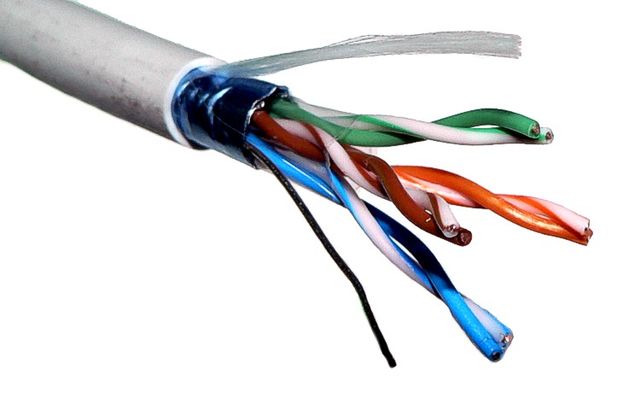Category 5 cable (Cat 5) is a twisted pair cable for computer networks. Since 2001, the variant commonly in use is the Category 5e specification (Cat 5e). The cable standard provides performance of up to 100 MHz and is suitable for most varieties of Ethernet over twisted pair up to 2.5GBASE-T but more commonly runs at 1000BASE-T speeds. Cat 5 is also used to carry other signals such as telephone and video.
Category 5 cable that is partially stripped and showing its four twisted pairs (eight wires)
A Cat 5e dual-port wall-mount assembly showing the two wiring schemes: A for T568A, B for T568B
Category 5 patch cable in T568B wiring
Twisted pair cabling is a type of communications cable in which two conductors of a single circuit are twisted together for the purposes of improving electromagnetic compatibility. Compared to a single conductor or an untwisted balanced pair, a twisted pair reduces electromagnetic radiation from the pair and crosstalk between neighbouring pairs and improves rejection of external electromagnetic interference. It was invented by Alexander Graham Bell.
Unshielded twisted pair cable with different twist rates
F/UTP cable
S/FTP cable
Twisted ribbon cable used for SCSI connections







